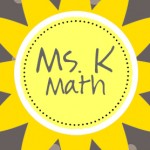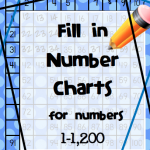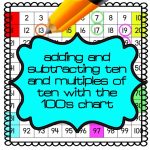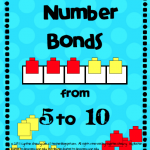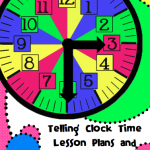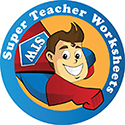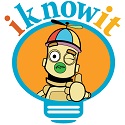An Answer to Help Students Finish High School
While teaching in a high poverty school and giving students the best education I can with the resources provided , I still wonder if most students will succeed in the midst of their home life with all of its habits and distractions. I have often thought the only way to ensure achievement is to place them in a boarding school atmosphere with the 24-hour support of dedicated professionals to influence good social and educational habits. This is something that also This is an area I have been pondering ever since I watched Waiting for Superman–the documentary. In Washington D.C. and Maryland, charter boarding schools have been developed for under privileged students called SEED schools. These schools have a 91% graduation rate with 95% of these students enrolling in college within 18 months of their graduation. Students who attend these schools are three times as likely to graduate college as their peers from the same neighborhoods. Compare this to a 1998 study done in which only 71% of ALL public school students privileged and underprivileged in the U.S. graduated high school. Since the SEED school concept has shown such a high success rate, the are wanting to spread the SEED schools to other states. If you would like to learn more about the SEED schools or request a SEED school be started in your area you may contact the SEED foundation.
Need Free Clip Art To Spice Up Your Worksheets?
Take a visit to this free clip art website by Lee Hansen to find lots of cute borders, and clip art images. Many of the images are of holiday items. I especially like the borders. The clip art is completely free for classroom use, club use, non profit use, personal use, blogs, or web page articles. The clip art may not be used for commercial use.
Take a Ride with Division
My favorite way to begin teaching division to third graders (or fair shares with younger students) is to read Stuart J. Murphy’s Divide and Ride book. This is a short story about kids who go to an amusement park to ride roller a roller coaster and various other rides. In each scenario of the story different amounts of seats are available with different amounts of children to fill each seat. These scenarios provide a way to discuss division to students. Remainders are even discussed when students must be left off of the ride because there are no more seats. After reading this book, students can use a circle mat or egg carton to represent the rides with counters or beans to represent children on each ride. If you want to be extra cutesy, you can decorate an egg carton like a roller coaster and place puffballs with googly eyes inside to represent students :). For a free CircleMat which is useful for multiplication or division, click the link.
Pi Hoop–Deal or Dud?
After designing a lesson for students to discover pi and trying to collect many sizes of circular containers, I happened across this The Pi Hoop in the ETA/Cuisenaire catalog. Since I order all of the math supplies for my school, I thought, “Wow! At only $4.95 I could order a whole class set”. So I did. When the hoops arrived I was excited since this alleviated having to find multiple containers to teach the discovery pi lesson. On showing them to some teachers at a common planning meeting, I was dismayed to find that the cheap plastic cracked when trying to fold down the ruler part that creates the radius of different circles. If you are gentle with the pi hoops, the concept of the hoop is great because it allows for a discovery lesson–however if an adult was able easily to break the plastic, imagine a class full of kids with the pi hoops in hand. In my opinion, save your money–they may come out with a sturdier version later on. Collect containers for now. An assortment of containers most likely will engage your students more than a plastic hoop anyway.
Will Federal Education Funding Change?
John Kline the chairman of the Heritage Foundation recently discussed federal legislation which is on the horizon. This legislation will eliminate federal funding programs that do not allow school systems to spend money in the areas that they most need. Right now federal education funds are dispersed in different categories. For example, a school may be brimming with interactive whiteboards (smart boards) and other technology, however what the school really needed most was an additional interventionist to help struggling readers. Federal funds may not be allotted for this particular need, and so the school continues another year with their need unmet—but with plenty of technology! The good news is that educators can now look forward to legislation that will counteract this pitfall in federal education funding. View John Klein\’s Video
Happy Memorial Day!
Are You Out of Ideas to Motivate Students to do Homework? Try This
We recently acquired a new fourth grade teacher at school who took another teacher’s place. This new teacher is brimming with innovative ideas. She has redecorated her classroom and one of the items she had posted was a Monopoly like game board. However, instead of the word Monopoly, the 35 inch game board read “Homeworkopoly”. Out of curiosity I had to ask about this. Each time students turn in homework, they get a chance to roll dice and land on one of the Homeworkopoly spaces. Just like Monopoly each space is labeled with different opportunities. Some spaces allow students to turn over a chance card, others allow students to gain a reward such as a free homework pass, eat lunch with the teacher, and so forth. Students are motivated to turn in homework so that they can play the game. Homeworkopoly makes an attractive addition to a bulletin board, and the best part—it’s completely free. (I asked this fourth grade teacher if this actually improved students’ desire to complete homework. She said that they were more motivated, and that it increased their desire to turn in homework. You may download this pdf file at the following site with instructions and chance cards. Just click on the following picture.
A Long Division Game
Marilyn Burns (my math hero) co-authored a book called Extending Division, which has many lessons for students who are in the process of learning division. One of the lessons is called “The Division Game”. In short the students make two decks of cards–a pile of multiples cards and a pile of factor pairs. Students draw one factor pair card and five multiple cards. The object of the game is to eventually gain a hand of multiples cards (by drawing and discarding) that match the factor pair card. During an actual experience with fourth graders, the students needed most of the hour class period to actually understand the game and didn’t have quality time to experience the game in full the first day. Once the students had understanding of the game, they really enjoyed playing. The other quibble I have with the game is the amount of time that students must take to make their own multiple and factor pair cards. While making multiple and factor pair cards is another opportunity for students to become familiar with these concepts, again this becomes a time factor spent making cards when students, in my opinion, could spend their time doing a richer activity.
Teach Area–Yum, Yum!
Lower elementary students must calculate the area of a shape by counting square units. Inch tiles work well for this if students are calculating the area of a rectangular shape. However, if you want to make your lesson extremely engaging give your students Cheez-its or square Starburst candies which measure an exact square inch. Students will eagerly measure their square units using these yummy manipulatives knowing they can munch on them later.
Teach with Style (at a discount)!
Look stylish while you teach! One of my favorite stores Ann Taylor Loft offers teachers a 15% discount off of their purchases. Just show proof that you are an educator with a pay stub or your teacher’s badge to claim your discount. Unfortunately this discount doesn’t apply to the regular Anne Taylor stores only Anne Taylor Loft participates in the teacher discount offers. To gain even more of a discount, see this link to get additional coupons for your next shopping trip. http://www.bradsdeals.com/stores/ann-taylor-loft-coupons
Will Teachers Be Replaced with Technology?
As a result of the millions of dollars in philanthropy Bill Gates has poured into education many advances in educational technology have been made in the U.S. Some examples of what Gaters has contributed to are as follows. Video games are being developed by Quest Atlantis to help students become proficient in math, science, and literacy. Sal Khan, a former hedge fund manager, began developing You Tube videos to help his younger cousin in school. These videos received much more anticipation that Khan expected. So much attention that Gates’ children viewed them to help them with their math. Google and Gates then both helped Khan develop the Khan Academy. Some teachers are using Khan’s videos as homework for students to watch while they spend class time in a tutoring like atmosphere. Online learning is gaining popularity in India and in Florida as students retain more information with the differentiated one on one instruction a computer provides. Studies have shown students still need adult supervision of their learning in a computer lab, so if teachers are less depended upon for instruction, their title may become intellectual coach or research assistant. For more about this topic, follow the links:
http://www.fastcompany.com/1750540/bill-gates-takes-on-educations-biggest-bureaucratic-beast-with-video-games?partner=rss http://www.fastcompany.com/1722914/can-computers-replace-teachers.
